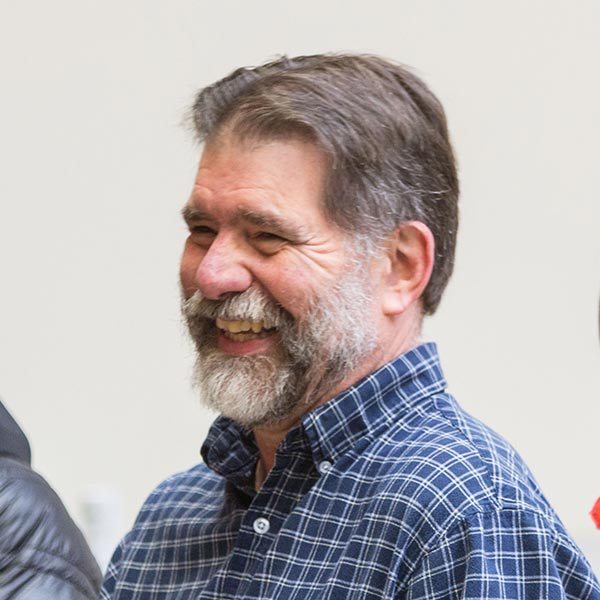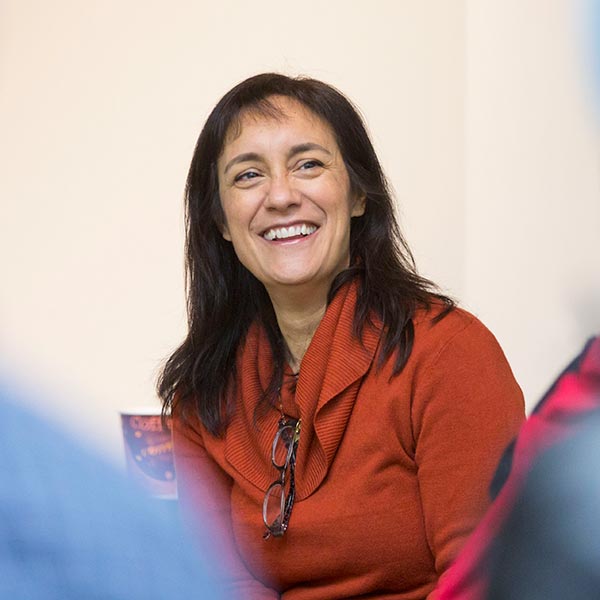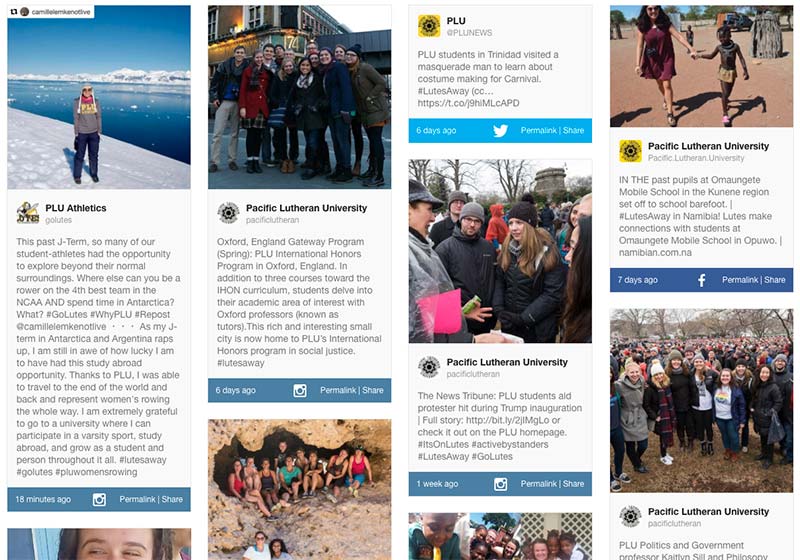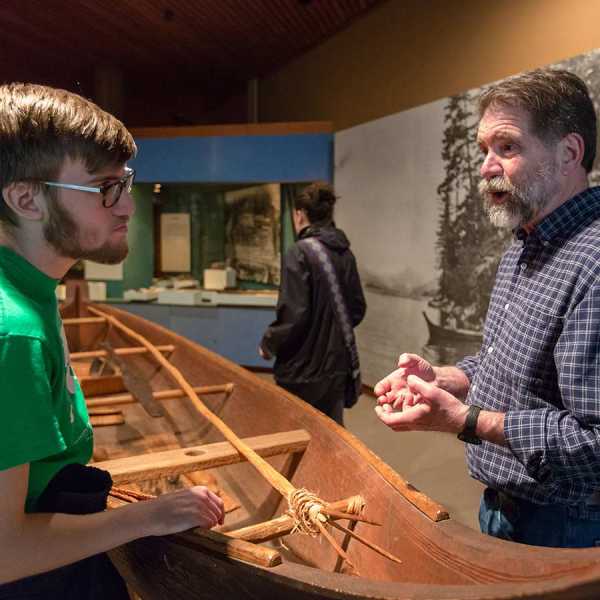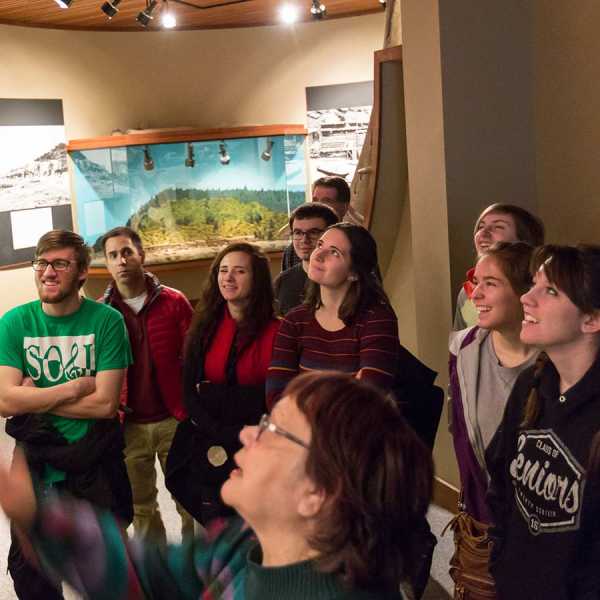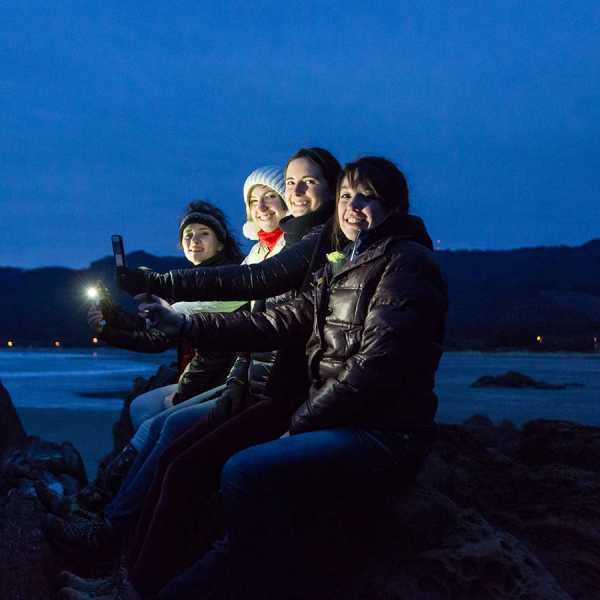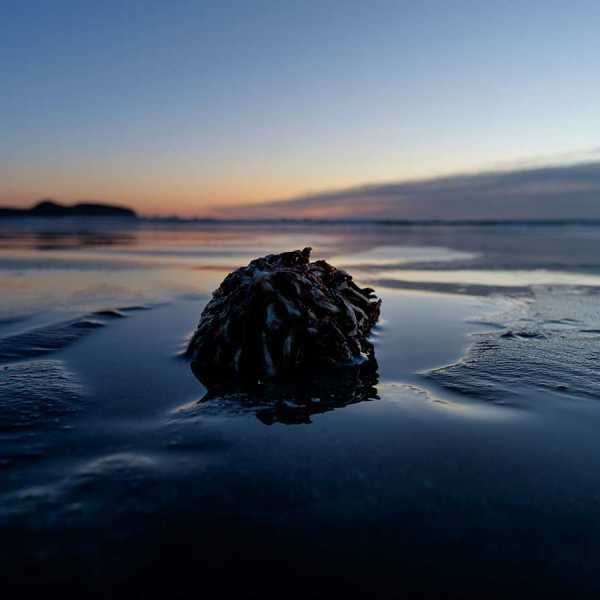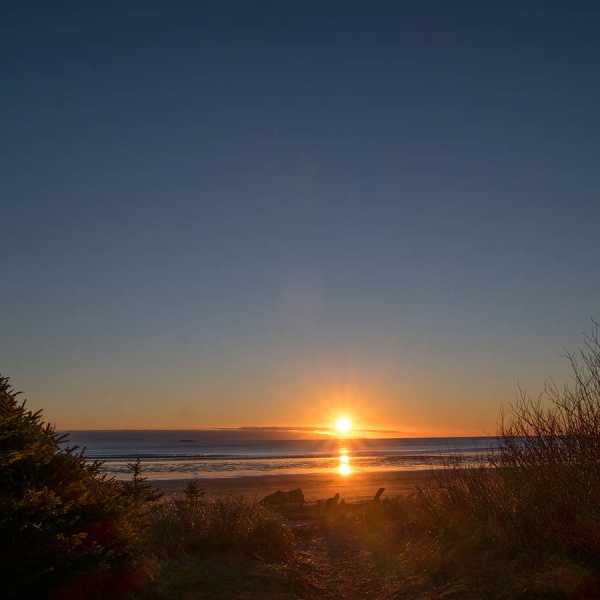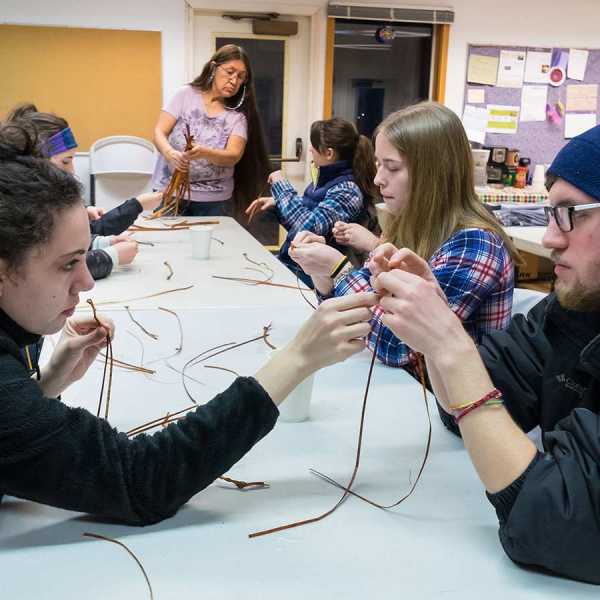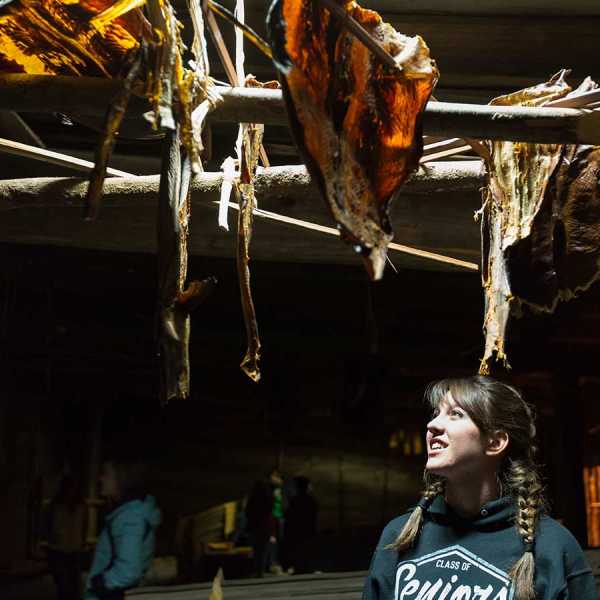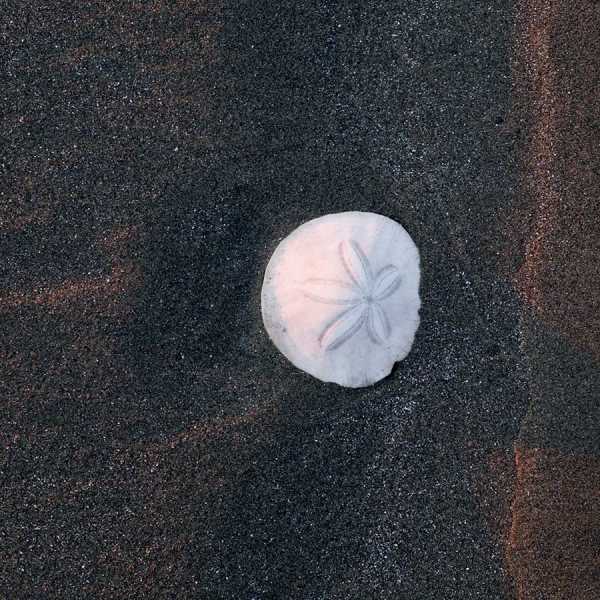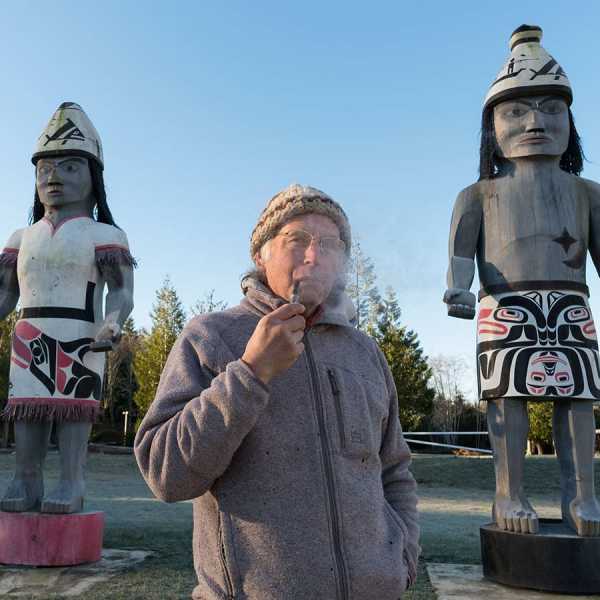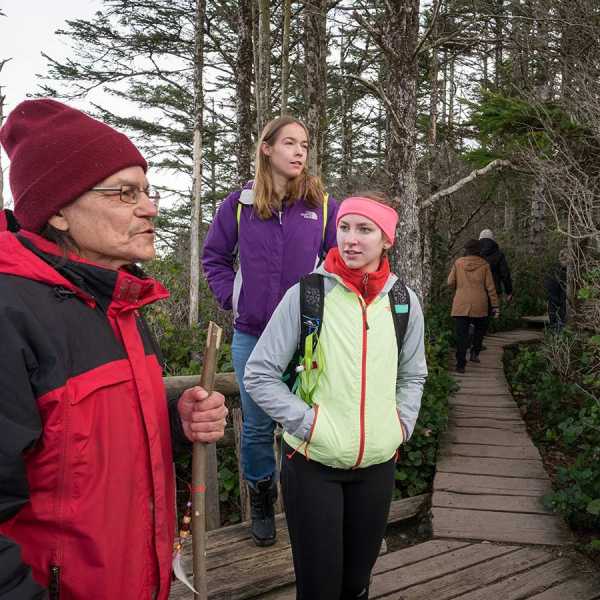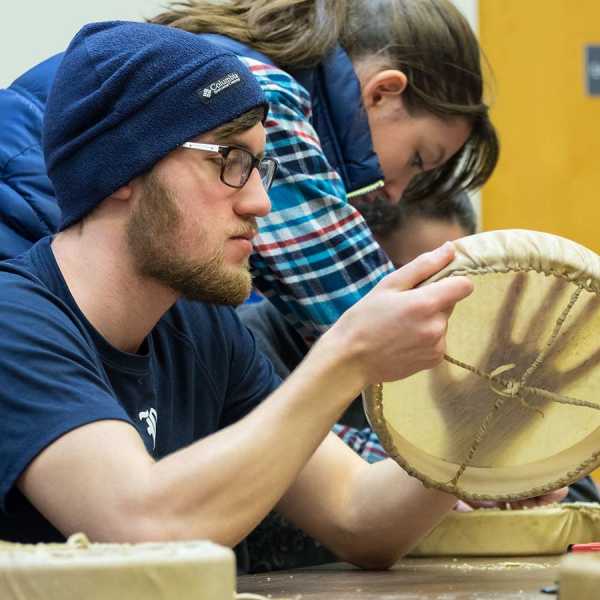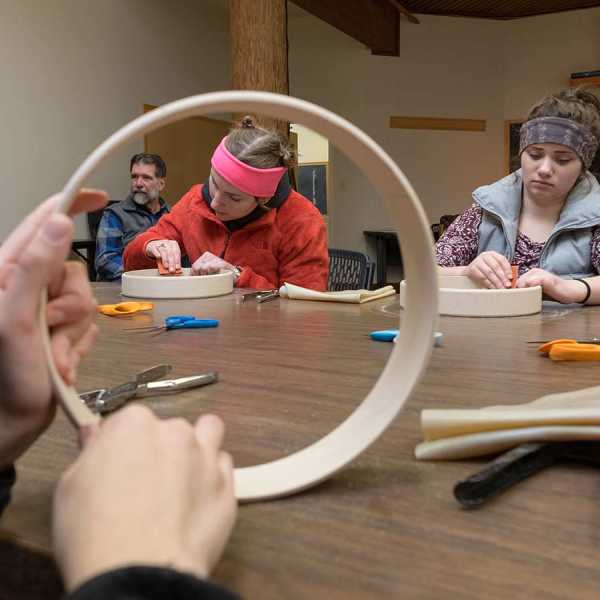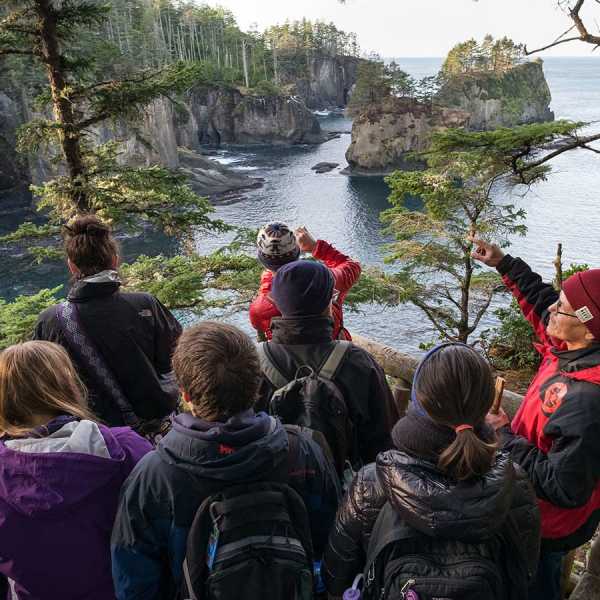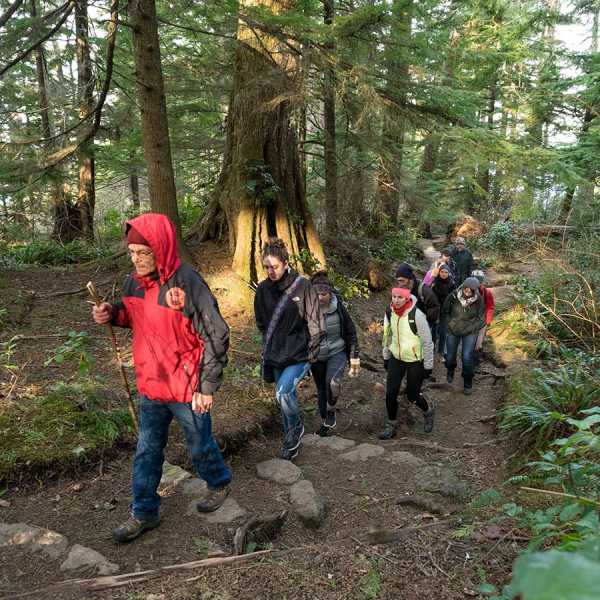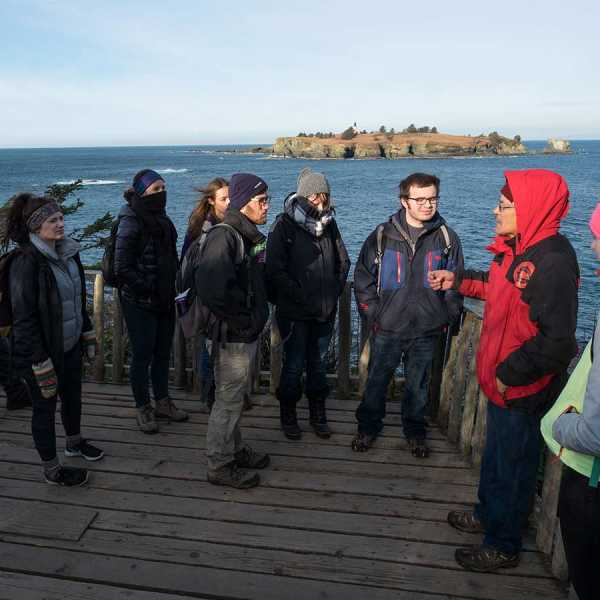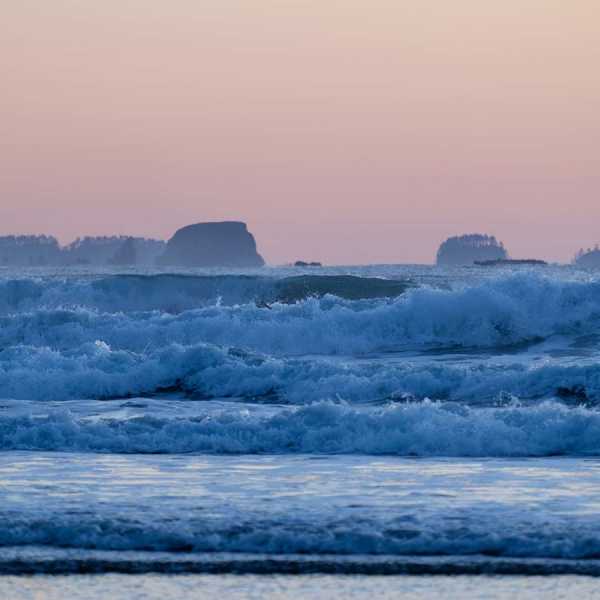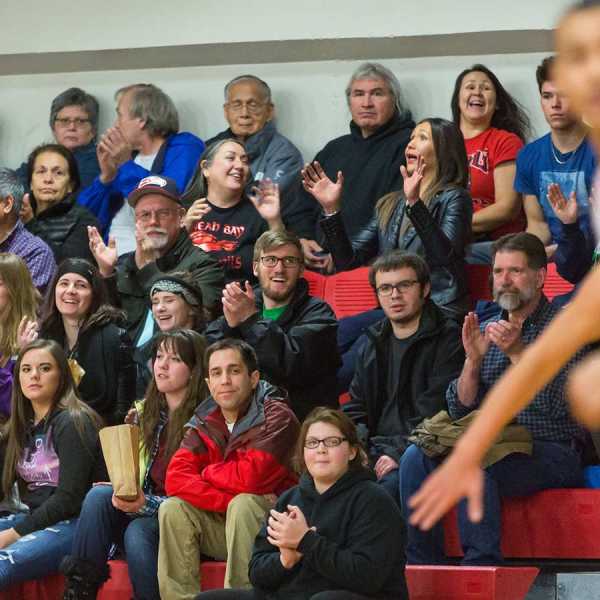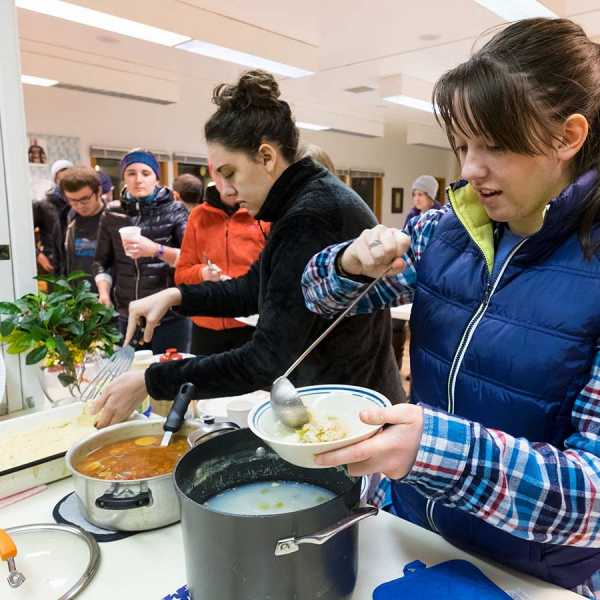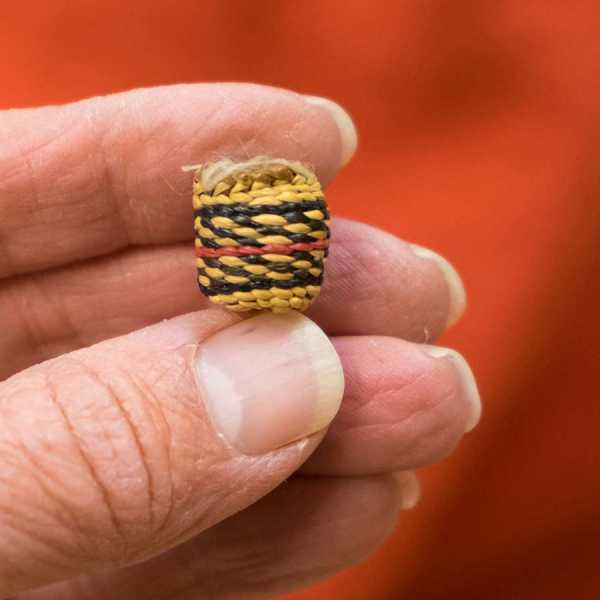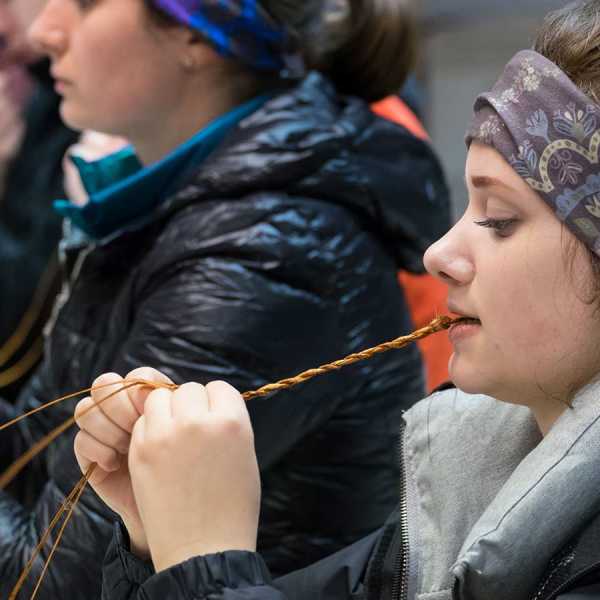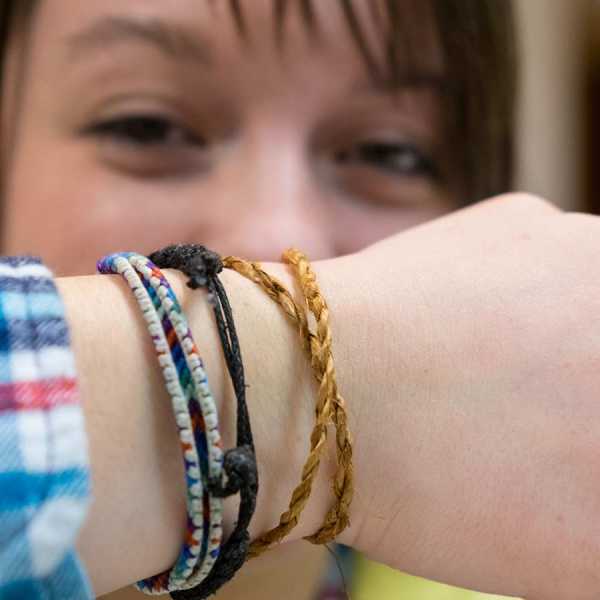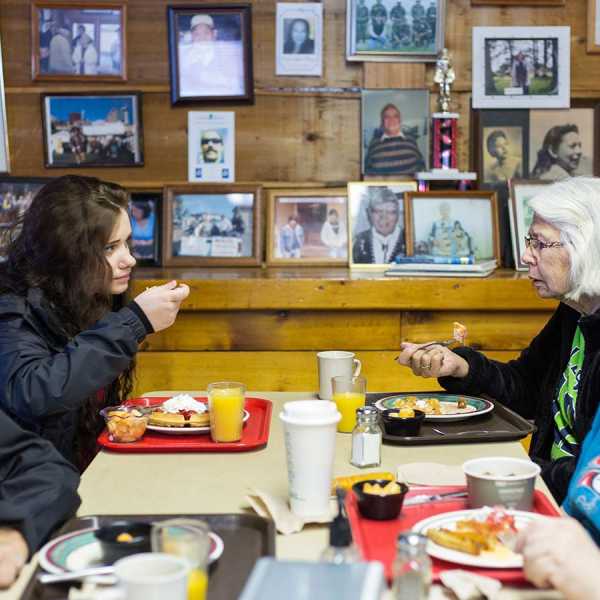Makah tribe continues longtime tradition of sharing its story with Lutes
The white vans pulled into the parking lot at Washburn’s General Store along Bayview Avenue — known to locals as Front Street — as they have every year for 21 of the past 23 years.
The faces of the Pacific Lutheran University students who filed into the store were new, but that didn’t matter.
“Are you guys PLU?” someone asked. “Where’s Dave?”
David Huelsbeck, professor of anthropology at PLU, says the greeting from the Makah tribe stays the same, even as the students enrolled in his January Term course change: “Welcome back to Neah Bay.”
Huelsbeck has brought a small group of students to the furthermost tip of the Olympic Peninsula each year to learn about a native tribe he’s researched for decades. It’s designed as an introduction to anthropology, but it offers so much more to those who enroll.
Neah Bay is an immersive study away experience just four hours from PLU’s campus. It offers a glimpse into a community that works hard to preserve its culture and sovereignty, teaching tribal members and outsiders alike about the rich history and entrenched values of the Makah people.
“It is like the students who are going this year have a 20-year relationship,” Huelsbeck said. “You can’t develop that kind of trust overnight.”
Still, even though he’s considered an adopted member of the community, Huelsbeck is careful not to take the lead.
“It’s an issue of authority,” he said. “I’m one kind of authority on Makah culture, but I’m not Makah.”
So, staff from the Makah Cultural and Research Center (MCRC) heavily influence the direction of the study away experience. Janine Ledford, executive director of the MCRC, and others create and coordinate the 12-day schedule of activities and lectures.
Staff members even offer advice on in-class readings before the students arrive in Neah Bay, Huelsbeck noted. “Collaborating is the best way to have a good outcome,” he said.
The fruits of that collaboration trickle down to the students.
“I felt welcomed and friendly with people immediately,” said Ian Rice ’20, a political science and global studies double major who studied there last month. “You don’t have to ask a question of somebody to get an answer.”
Natalia Giovengo ’20, an anthropology major, said she was surprised by the intimacy of the Makah’s relationship with PLU. “He waves at passing cars,” Giovengo said of Huelsbeck. “They see the white vans and they know it’s PLU.”
All the students say that warm welcome empowers them to dive deeper and ask questions they wouldn’t otherwise. It gives them confidence in a culture unfamiliar to them.
“That’s why it’s so immersive,” said Rachel Longnecker ’19. “It’s his relationship with people.”
‘Living connection’
The MCRC grew out of the discovery of the Ozette archaeological site, which was originally occupied by the Makah people. A portion of the village was leveled and encased by a mudslide around 1750. The 11-year excavation of the site, which started in 1970, produced more than 55,000 artifacts, many of which are on display at the museum.
“It’s a site of national significance,” Ledford said of Ozette.
Greig Arnold, vice chair of the tribal council and founding director of the MCRC, said the museum started with a box of keys and a commitment to protecting the flawless discoveries.
After much deliberation between a world-renowned exhibitor and a committee of Makah people, the MCRC was built at the entrance to Neah Bay — a gateway to the town.
“The museum is based on the storyline of the seasonal round,” Arnold said. In other words, each gallery is filled with artifacts representing spring, summer, fall and winter.
Building the structure and the narrative was the easy part, Arnold said. Writing the copy to describe all the artifacts was most challenging. The years-long process resulted from creative tension between academics and the Makah people, who wanted to share their history in their own words.
“This is our people’s museum,” Arnold said. “Out of Ozette came all this evidence that verified what our elders were telling us.”
Huelsbeck joined the excavation effort about six years after it started, serving as a site director during his graduate studies at Washington State University.
“Dave was an important part of the excavation,” Ledford said.
But, she added, he took that research a step further. Beyond supporting the teams working to unearth history, Huelsbeck was immersing himself in contemporary Makah culture. He learned about the community and built lasting relationships that created a “living connection” to the artifacts from Ozette.
Eventually, several years after Huelsbeck landed a teaching job at PLU in 1989, Ledford said it made sense for him to connect his work there to his work in Neah Bay.
The result is one of PLU’s longest standing J-Term immersion experiences, one of many study away programs within the Wang Center for Global Education.
Huelsbeck said many students study abroad in other countries after traveling to Neah Bay. Some regard the Makah immersion as their most profound study away experience, despite the relatively short drive from campus.
“It definitely isn’t a tourist experience,” he said. “That’s the whole point of study away.”
Despite that immersion, Ledford says, students only scratch the surface in the 12 days they study in Neah Bay.
“But it’s still meaningful because they’re here,” she said, as opposed to studying films or textbooks. “They see a continuum of Makah culture.”
Maintaining history
Students run the gamut of activities during their time on the Makah Reservation. They hear lots of stories, too.
SHORT-TERM STUDY AWAY
Learn about other opportunities PLU offers to students pursuing short-term study away programs in January.
“You learn a lot in 12 days,” Longnecker said just a few days after arriving in Neah Bay last month.
They do manual labor for the MCRC; this year included work prepping for a lighting improvement project. They tour the village, Cape Flattery and the Ozette site itself. They participate in hands-on activities, such as making deer-hide drums and cedar bracelets. They visit the senior center and Head Start program, two of the many tribal-operated social service programs, to build relationships with Makah of all ages.
All of the activities, from start to finish, involve formal or informal education about Makah culture and values.
“I’m hoping the experience coming to Neah Bay and (learning about) Makah culture will lead to a reflection on their own lives, what it means to be a human in the company of others,” said Greg Colfax, a Makah carver who worked on the Ozette excavation effort. He shared a lecture about his experiences at the site.
Colfax spent more than two years at Ozette, working in a number of roles, including bringing clams and sockeye to the workers and guarding the site upon appointment from the police chief.
“It had nothing to do with the pursuit of science,” he said of his involvement. “It had to do with being a part of something very exciting.”
Colfax’s great-grandmother was born where the excavation took place. Growing up, he heard endless stories from elders about his ancestry there.
“I had a family connection,” he said. “Being there, I was seeing what they had seen long ago.”
Colfax said growing up Makah came with high expectations, not only from your own family, but from other families, to get the story of their people right. “That’s a strength of Makah culture,” he said. “It’s how a village raises a child.”
The values of orating history and raising children in community go hand in hand for the Makah.
Storytelling, something PLU students often participate in, is a responsibility that is passed through generations.
Jean Vitalis, a retired chief judge and current MCRC board member, said it’s important to teach Makah children to have a significant place in the world while also embracing their ancestry.
“I have a deep responsibility to my family, to keep as much of our history as possible,” Vitalis said. “That’s how we survived. Those traditions and values are just as important today as they were generations ago.”
That responsibility, Vitalis says, creates a deep bond between Makah tribal members and the reservation they call home. Her entire family — all four children, 12 grandchildren and two great-grandchildren — live in Neah Bay. Many left for college and returned, to give back to the community that raised them.
Ledford says that’s common among the tribe.
“When you’re Makah and your family has lived here since the beginning of time, it’s a strong connection,” Ledford said. Of course, the clean air, fresh fish and gorgeous scenery help draw them back, too, she added. “Once you come to Neah Bay and once you see the beauty of the place, you want to come back.”
Resilient spirit
Resiliency is prominent in Neah Bay. While community is vibrant and kinship ties run deep, Makah tribal members still face a number of challenges.
June Williams, who led a tour of the museum and cooked a clam-chowder meal for PLU students, said substance abuse is a pervasive problem.
But the tribe funds a health center that, among other services, offers rehabilitation for recovering addicts. Williams said once those folks turn their lives around, cultural education offers an outlet for staying on track.
“They come out of treatment and have a hunger for their heritage,” she said.
Other social service programs also combat domestic violence and trauma from varying causes, she added. Housing is provided to those in transition, part of the general housing program — one of 82 departments within the tribal government.
“Nobody should be stuck where they’re at,” Williams said.
Additionally, oral history is harder to maintain, said Arnold, the tribal council member. As elders die and technological distractions engulf youth, social interaction diminishes.
“All that messes with your ability to interact with nature,” he said. “But, it’s still our responsibility.”
Offsetting those changes is a deep commitment to cultural education through the museum, as well as local public schools. Both place heavy emphasis on learning the Makah language.
The tribe focuses on educational opportunities for Makah of all ages, Ledford said. Adult education helps tribal members earn GED certificates. Head Start offers free early childhood education and child care starting at infancy.
Everyone touts the near-perfect graduation rate at the public high school, which educates a student body that’s roughly 90 percent Makah.
Beyond that, Ledford says, all students attend college, join the Job Corps or enlist in the military after high school. Many of them eventually return, to apply the skills they’ve gained within the community.
“People stay here through the good, the bad and the inbetween,” Ledford said.
Many tribal members say that success in school is a direct result of the strong ties to identity, and the respect the school district has for that identity.
Yvonne Wilkie, a storyteller who invited PLU students to her home, said cultural education builds confidence and empowers students.
“They are comfortable in their own skin,” she said. “It makes a huge difference in how they think of themselves. And they know they always have this community to come back to.”
That community is one that is present at every stage of life, for everyone. PLU has become a part of the fabric, at least for a short time each January.
One Friday night during J-Term, Huelsbeck brought PLU students to Neah Bay High School’s boys and girls basketball games. It’s an annual tradition that shows one way Makah culture intersects with that of PLU students — a slice of small-town America under Friday night lights, Huelsbeck says.
Nearly everyone the students met from Day One sat courtside. Both teams won handily, against a backdrop of enthusiastic support from relatives, extended family, friends and more. (Those family values stick with PLU students long after they return home.)
Every few minutes, a familiar face greeted Huelsbeck. Each one took a seat next to him, eager to hear about this year’s group from PLU. Some lingered longer than others, but all parted with the same farewell message:
“Welcome back to Neah Bay, Dave.”


